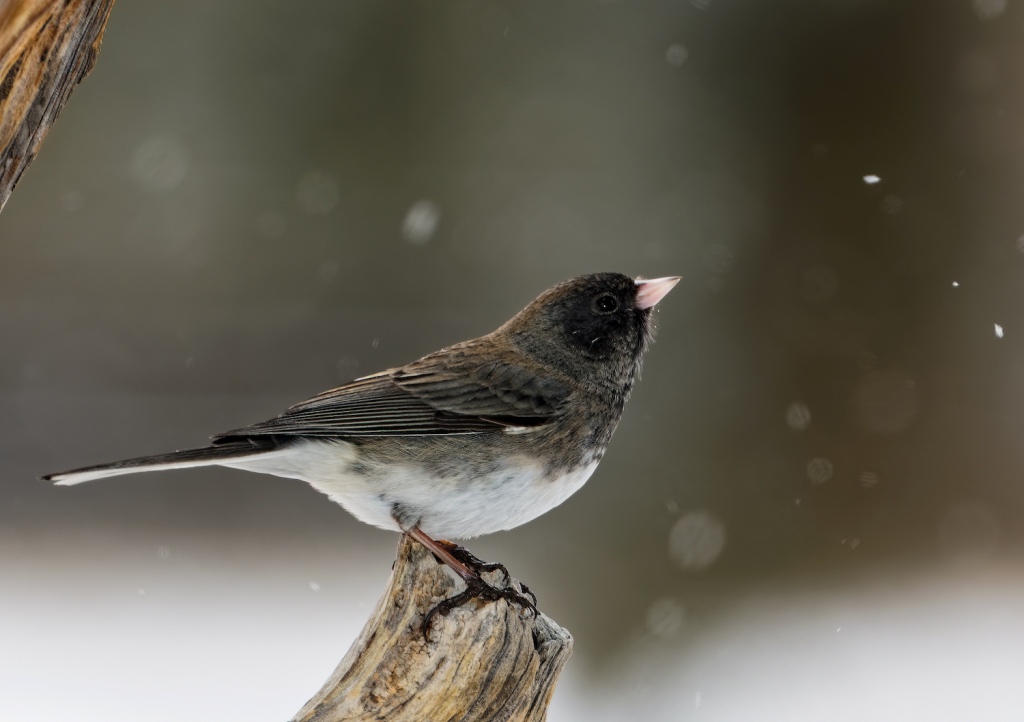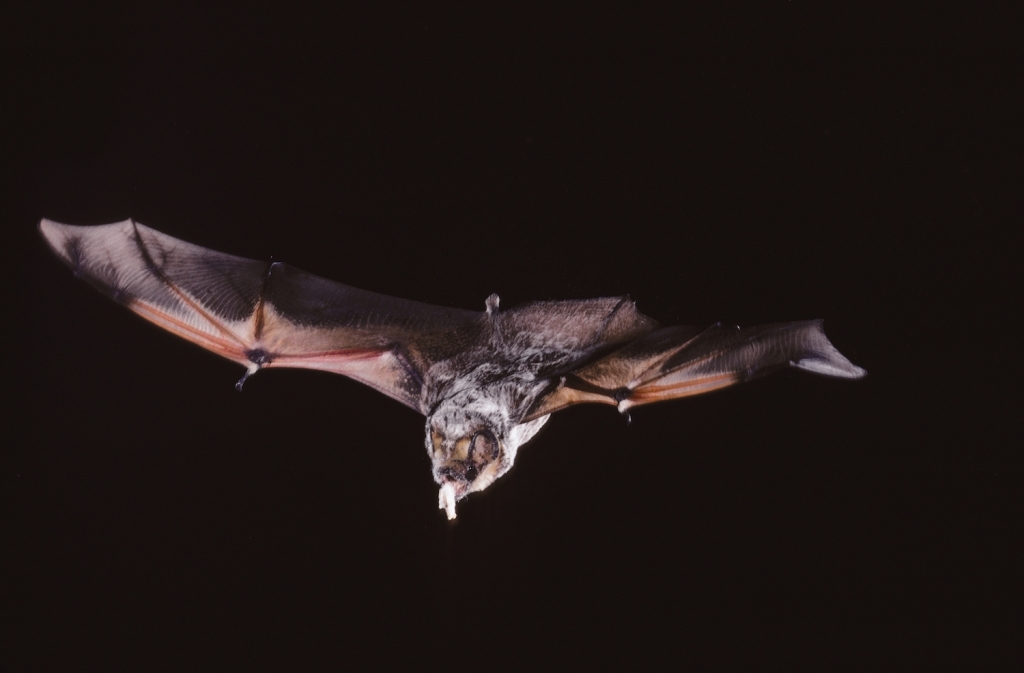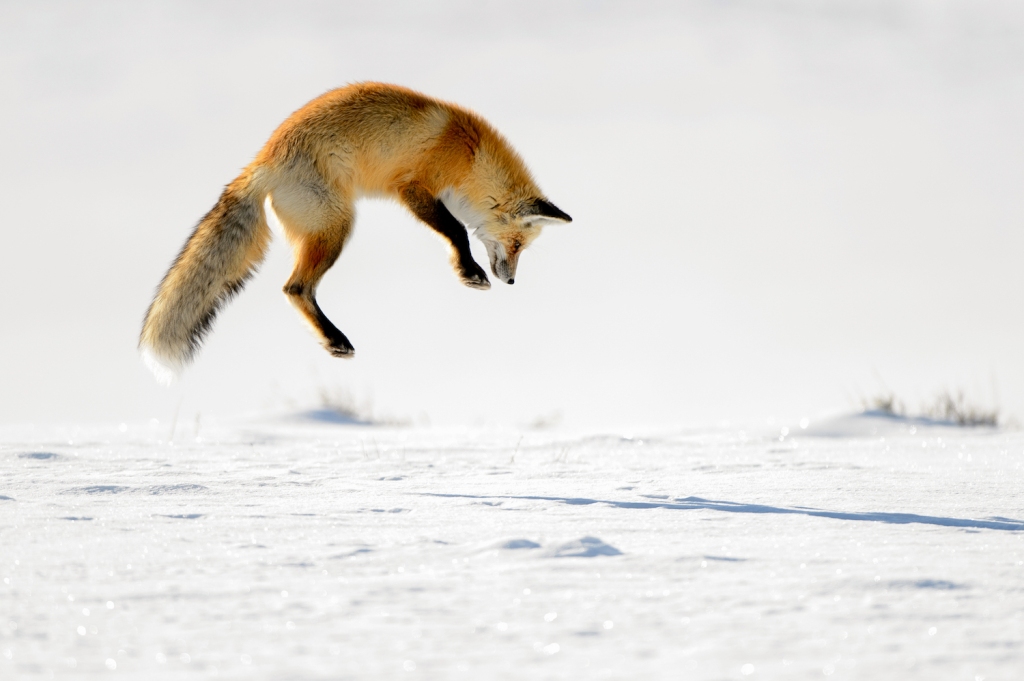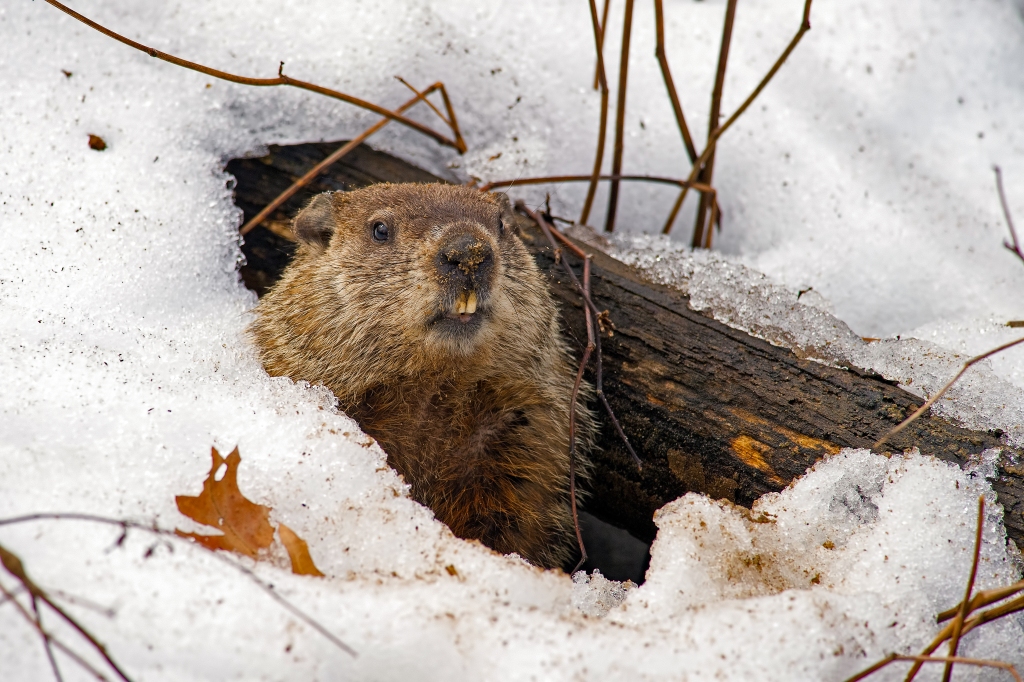Guest post by April Vaos
Living in Illinois, we’re lucky enough to enjoy a change of seasons. Though I often find it difficult to switch from the crunch of fall leaves to the crunch of snow, it can be a peaceful time to head outdoors. Recently, I went walking in Independence Grove in Libertyville, part of the Lake County Forest Preserves in northern Illinois. As I looked around in the quiet, contemplative landscape, I thought about the life that teemed all around me, and how it was now hidden from view or departed on a migration.
While leading winter walks, I’m often asked, “Where are all the animals?” It depends on the animal. Each employs different survival strategies that help it adapt and even thrive in winter. What, exactly, do animals do to make it through the challenges of cold temperatures and a lack of food? Well, I like to say they have MAD strategies: migrate, active and dormant.

Migrate: Many animals in Lake County migrate, or travel, from one place to another over short, medium or long distances to survive winter. It isn’t so much about the cold as the lack of food in winter. Food sources such as insects, plants and fish—which can’t be reached when waterbodies are frozen over—are largely unavailable.
Birds, butterflies and even bats are common migrators. Though we often think of animals migrating across hundreds or thousands of miles to different states or countries, they can also migrate short distances vertically. For example, some amphibians and insects burrow further down the soil horizon below the frost line to stay warm.
Lots of folks marvel over the long migration of monarch butterflies (Danaus plexippus), but hoary bats (Lasiurus cinereus) make extended flights, too. It’s believed that Illinois’ hoary bats migrate to southern California or Mexico for the winter, a 1,200-mile trip each way!

Active: Some animals remain active during winter. Doing so means they need to find food continuously to survive. To endure the weather, they may grow extra fur or build winter homes. Examples of animals that stay active include white-tailed deer (Odocoileus virginianus), coyotes (Canis latrans) and even channel catfish (Ictalurus punctatus).
Northern cardinals (Cardinalis cardinalis) are both the Illinois state bird and a great example of an active winter animal. Cardinals are permanent residents, forgoing southward migration. Due to the cardinal’s varied diet of seeds, fruits and insects, they can find enough food in Lake County year-round. While often called warm-blooded, a better term is endothermic, meaning cardinals can produce their own body heat.


Dormant: Dormancy describes a period when an animal’s metabolic activity is minimal and development is temporarily suspended to conserve energy. This allows species to prosper in environments where they might not otherwise be able to survive.
There are varying degrees of dormancy. Hibernation is full winter dormancy, which can last all season and includes decreased body temperature, heart rate and metabolic rate. Groundhogs (Marmota monax) and thirteen-lined ground squirrels (Spermophilus tridecemlineatus) are hibernators. On the other hand, torpor, a deeper sleep than normal—as seen in black-capped chickadees (Parus atricapillus) and deer mice (Peromyscus maniculatus)—may only last a few hours. These animals are active in warmer weather but may enter torpor daily or during bouts of extreme cold.

Wood frogs (Lithobates sylvaticus) have an almost zombie-like adaptation. In fall, a wood frog finds a safe spot under a log or leaf litter. When the temperature in its home falls below 32 degrees Fahrenheit, the frog starts to freeze. This prompts its liver to convert glycerol into glucose, forming a sort of antifreeze. If you were to find a frozen wood frog, there’d be no heartbeat or breathing motion to tell you it was alive. But come spring, this hardy critter will thaw and hop away as if it never became a frog-sicle.
It’s interesting to note that most animals don’t have just one, but multiple strategies for outlasting winter. Blanding’s turtles (Emydoidea blandingii) are cold-blooded—or ectothermic—so they depend on the sun’s rays, plus air and water temperature, to keep their body temp ideal. For the winter, a Blanding’s turtle migrates down to the bottom of a wetland and buries itself in mud. Once safe and sound, it enters dormancy.
Looking for a way to not just survive but thrive this winter? Venture out for a hike with our Animals in Winter program on January 15, 2022, 1-4 pm. Or learn to decipher animal tracks by taking our Winter Tracking and Wildlife Observation Workshop program on January 29, 2022, 9:30 am-12 pm.
Whatever you choose, I hope you get outside this winter and enjoy the serenity of the season, knowing that many animals are hunkered down for the time being—just waiting for spring to return.

You forgot the very active, pesky, annoying, and sometimes entertaining and amusing, squirrels who eat all the birdseed I put out for the non migrating birds.
Thanks for reading, Ellen. We did not discuss squirrels, but they are indeed very much active over the winter!